Patter - 08 - Future of running: Placemaking, crew hubs and their role within neighbourhoods
Some recent brick and mortar running spots that have caught my eye and signal to a more constant running presence in our neighbourhoods and cities
I’m back with some thoughts on one of the outcomes of the maturing presence of running crews and more emergent run brands. That outcome being: a brick and mortar presence for what were once just people meeting up for a run.
I’m convinced that this is a signal for a future of running that includes it being a pillar within placemaking strategies and the neighbourhoods they revolve around.
Running’s prevalence in culture is growing and its presence in our cities is maturing. Well-covered has the onslaught of run crews and more community-orientated emergent brands been. Most recently, a Guardian piece - here - breaks down the dynamics of run crew merch and its signalling power in the UK.
In short, these crews and brands are just one of the catalysts for running’s evolution across participation, diversity, and…new commercial opportunities in our cities.
The most recent evolution is that of permanent, brick-and-mortar hubs, shops, and spots that are less retail and more positioned to serve their respective people across more than just new gear. Think: Physio treatments, coaching panels, and a place to drop a bag before the Sunday long run.
A few that have caught my eye:
Totoken —Nihonbashi Hamacho, Tokyo
This neat ‘running station’ spot serves as the meeting place before a run, a bar serving local beers and saunas and ice baths for proper recovery. Running Stations are becoming more common in central parts of Tokyo, with their emergence being somewhat an innovation of Sentos - public bath houses - albeit their focus being a place to store work clothing during a run and recover after one. Totoken is by far the station that's most reflective of contemporary running culture and acts as the home for Hynm Run Club.
I visited just after it opened in September, it felt like a sound addition to an area of the city that's rich with runners and running routes.
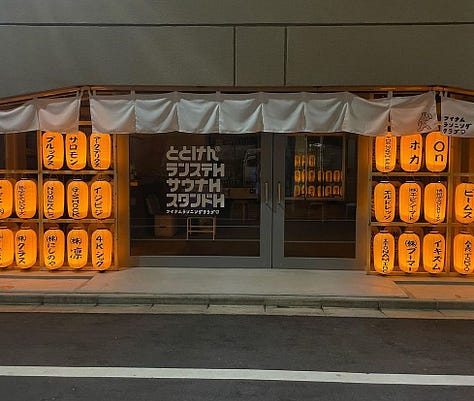
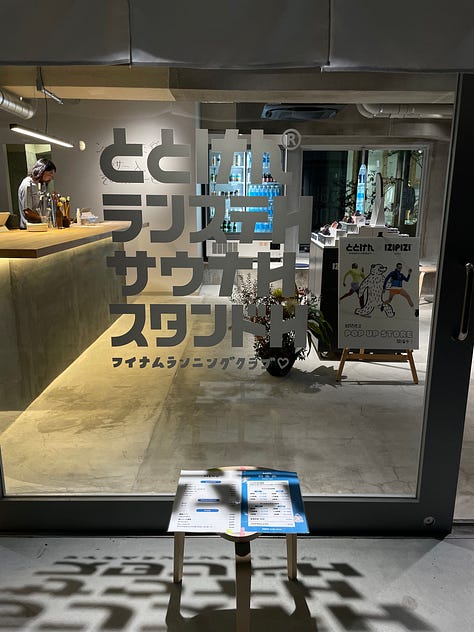
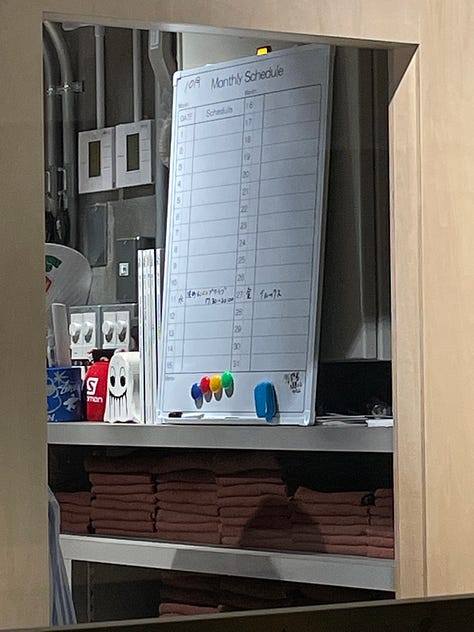
Knees Up — Hackney, London
Open just in time for the London marathon is Knees Up. Described as an all day running cafe, it’s the hub of the Your Friendly Runners crew; as well as offering a whole bunch of running-related services, it’s also the East London outpost of Good as Gold coffee shop and restaurant.
Working with On during their opening weekend for the London Marathon, Matt Horricks, the founder, told me there’s a lot more to come. A fun addition to a pocket of East London that, akin to Nihonbashi Hamacho in Tokyo, is rich with runners within specific creative taste communities.

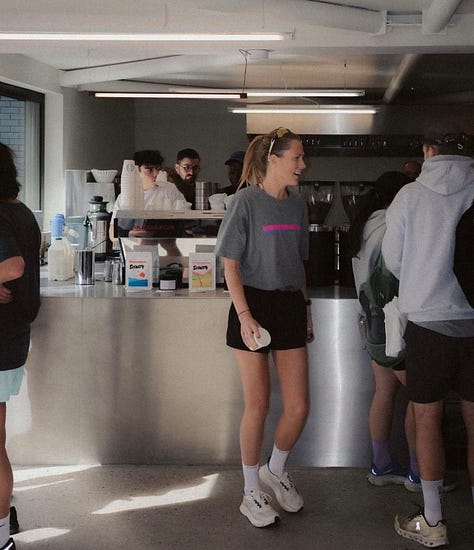
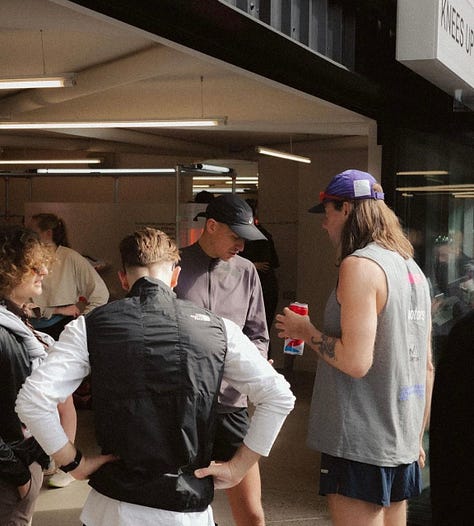
Bandit’s store — West Village, Manhattan
Bandit don’t need any introductions. The running brand is working with coffee shop operator Rhythm Zero to open their Manhattan flagship in West Village. Check this fun teaser video produced by the Bandit team.
The spot is yet to open and not much more is known other than the retail and coffee presence it brings. It’s safe to assume it will also act as the meeting spot for any Bandit running sessions, races, etc.
Why I think this is interesting
Well, all three signal just how much running and its surrounding community is growing into the fabric of cities. It's got me thinking that running can and should be considered a pillar in which placemaking strategies can be built, given the relationships runners have with their neighbourhoods.
In the same way that people are proud of where they are from, increasingly runners are proud of the crews they run in, in that recent Guardian article, one runner said: “When I wear this [RBC shirt], I feel like [there’s] something bigger, like I’m part of a tribe”…almost akin to wearing a team you supports shirt.
Representation
In some ways, hyper-local run crews can represent, support, and serve a proportion of their people better than, say… a local council member. They act as a dynamic representation of a place; with their maturing status in specific neighbourhoods of global cities a positive reflection of their impact: both at a local culture and commerce level.
A brick-and-mortar presence for these community-grounded crews and brands will further progress their opportunities for representation.
Local food operators
In the case of the examples mentioned, all three have tapped up local food and (/or) drink operators to cater and supply their spots. In turn, this creates not just a runner meet-up venue but a net-new outpost for local hospitality brands that in and of themselves have a customer base that now has a new venue to spend time and money in.
Neighbourhood movements
There’s also something interesting about the idea of walkable neighbourhoods and where their (literal) paths cross with running, hyper-local running participation, and what I’ve been calling modern movement across several projects of late.
This tweet here, got me thinking about the idea that, for some, having a running station or crew hub as a halfway point on a journey could change the way running gets them around a city.
To conclude, there are opportunities abound for running to further become engrained in our cities. For brands in the sport, those adjacent to their communities or simply within the neighbourhoods they run through, now is the time to start thinking about how running can show up in the right and authentic ways.
Some links pertinent to this issue of Patter:
A good read on the 15 minute city - here
I love this imagery for Nike’s Fast Pack collection. Photography from Rory Griffin and product imagery from my friends at Handover Agency
Self Space in London have started a Walk Club - here